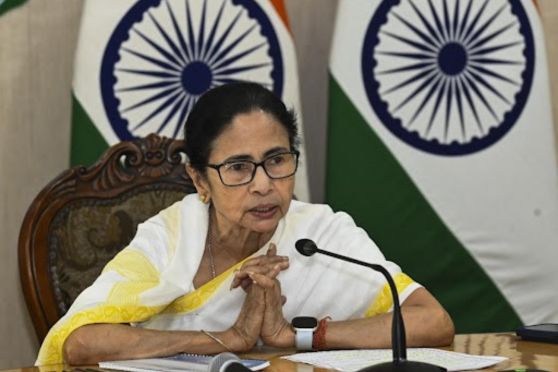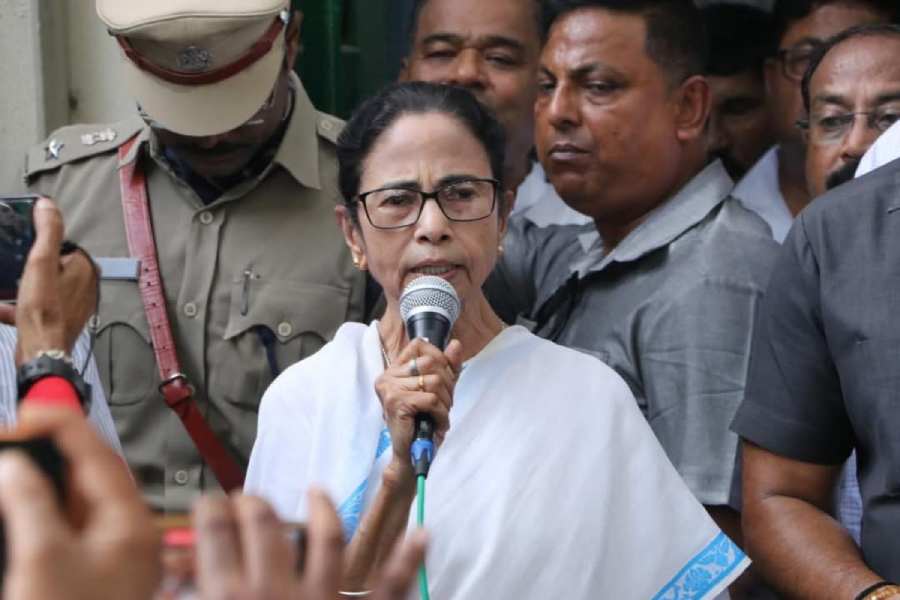 |
| The auditorium (picture above by Sanjoy Chattopadhyaya) built by the Indian Council of Cultural Relations, under the external affairs ministry, bears testimony to Calcutta’s experience with cultural complexes. Though it’s not the state government but Delhi which is the sponsor, it has taken 15 years for the complex — Rabindranath Tagore Centre — to be ready. At least it began with the right idea — Charles Correa being appointed as the architect. But Correa threw his hands up, possibly frustrated by the delay during which even the foundation was laid twice. He departed at the concept level amid unconfirmed reports of a difference of opinion with the ministry. Local architect Dulal Mukherjee took charge but changes had to be made to Correa’s concept since he was not aware of municipal rules when he envisioned it in the early nineties. The project had to be shrunk with ground coverage reduced to below 40 per cent. The auditorium now can hold just over 250 people. The complex will have art galleries, a courtyard to display sculptures, a library-archive and conference facilities. Entry will be difficult but not as difficult as entering Hanoi while it was being bombed. The complex, which will open later this month, is on Ho Chi Minh Sarani, the home of the American consulate. Visitors will have to pass the security enclosures of the consulate. Cars will be allowed, but not taxis. Good luck. An artist’s impression of Kolkata Kala Kendra, planned on Rawdon Square. It will have two auditoriums, a projection room, a seminar hall, exhibition space and a library |
The city’s latest cultural complex will be no better than its other halls
Some people can’t see beyond their noses. Our government can’t see beyond the PWD.
It calls in the public works department when a road needs to be built. When the government plans to construct a cultural complex, it’s the PWD it turns to, again.
Kolkata Kala Kendra, described by the government as the city’s first cultural complex of international standard, has been handed to the official Master Builder PWD, taking it off the drawing board of Balmer Lawrie, the public sector company earlier chosen for the project.
The dramatic change occurred even as the last strains of the idea’s announcement still hung in the air. Dilip Kumar Chakraborty, principal secretary of information and cultural affairs, had told Metro that the complex at Rawdon Square would have an auditorium fit to hold a Zubin Mehta concert. Of course, a Ravi Shankar performance too.
An official of the cultural affairs department explained why Balmer Lawrie is no longer associated with the project. “Balmer Lawrie’s work was found to be dissatisfactory. PWD was supervising the work, but was not happy with it. They have also taken much too long,” he said.
The PWD confirmed that it had taken up the project. And why not? After all, it already has on its CV several of the city’s theatres.
If in the heady seventies, Calcutta didn’t have enough auditoriums to go round for the proliferating theatre groups, in the unexciting first decade of the 21st century it may not be the dearth of places to perform in that is the problem.
None of the auditoriums that have come up in the interregnum — and built by the PWD — satisfies artistes. Rudraprasad Sengupta, who heads one of the city’s best-known groups Nandikar, said that before considering whether theatre halls can be built by those whose expertise lies in laying roads, the question to ask is if the city needs a couple of more that the complex plans to put up.
It’s a question the government is unlikely to have examined before deciding to go ahead with the complex. If it had, it would have found that Star and Minerva — both restored at public cost — are in a dilemma: To be or not be. No one performs there.
Some of the other halls, like Ahindra Mancha, opened with much pomp, have either fallen into disuse or are less than optimally used.
These issues have become irrelevant since the decision to build the complex is final. It is also unlikely that the government has enquired if the architectural, acoustic and lighting skills that are the necessary conditions for building a complex of international standard are at all available in Calcutta. Experience suggests the PWD is not the repository of this knowledge, nor was it meant to be. Minerva’s restoration is evidence that Calcutta may not be abounding in talent and experience even outside the PWD.
For the cultural complex, expected to cost Rs 16 crore and scheduled to be completed in a year and some months, Balmer Lawrie had hired Kalyan Biswas, an architect who has built 40 auditoriums.
Biswas had drawn up the plan that was approved by the municipality. A few days ago, when Metro spoke to Biswas about the complex, the architect had talked excitedly about the hydraulic stage he wanted to build. “The stage is divided into grids and they can be raised to different levels. It operates much as a movable platform in a garage where cars are lifted to be cleaned or mended.” Commonplace abroad, Calcutta doesn’t have any of its kind.
That was before it was known Balmer Lawrie had been pulled from the project. The company doesn’t wish to make a song and dance about it. “The project has been dragging on for too long. Too many people were involved in it — the PWD, the cultural department,” said Gautam Roy, executive director (technical), Balmer Lawrie.
What the PWD will make of this project, draped in a coat of prestige by the government, is easier to tell, going by experience. It is slightly more difficult to pass judgement on Balmer Lawrie and whether it was the right choice for a cultural complex.
For a public property on a scale that aspires to international standards, one option is to call for designs from architects and select the best. Or appoint the best the country can offer — a Charles Correa or Balkrishna Doshi. For the auditorium, ditto. Get the best acoustics and light engineers.
None of these internationally accepted practices was considered worthy by the Bengal government, perhaps because it did not try to find out how such projects are executed elsewhere, or even think that this was necessary.
The National Centre for the Performing Arts (NCPA) in Mumbai, the country’s best cultural complex, did not think a symphony orchestra and an Indian classical music performance — let alone a drama — had the same sound and stage needs (see right).
Balmer Lawrie and Biswas at least had this understanding. Biswas had said: “The stage is being designed keeping in mind the requirements of theatre. Music and theatre require very different kinds of auditorium.”
Officials of the cultural affairs department echo the view of their boss, Chakraborty. “It will be for music, dance and theatre,” they said.
The officials refused to comment on Biswas’s plan. “We do not know who he is and what he is saying. We had invited proposals from state and central PSUs. On the recommendation of Jadavpur University’s industry institute partnership cell, Balmer Lawrie was chosen.”
They admit that they are yet to think so far as the acoustics or the lighting. “We have to first complete the structure of the auditorium, only then can we think of acoustics.” It is hard to see how the structure can be separated from the acoustics.
“Every architect thinks he can do the job, while it can be correctly done only by a highly trained acoustician,” said D.B. Biswas, who built the auditoriums at the NCPA.
Theatre artistes are not surprised. “You need good theatre more than good auditoriums. But for some people in power new auditoriums are a way to prove they have done some work,” said Sengupta.
Just as they built an auditorium in north Calcutta exclusively to stage jatras, named after Phanibhushan Bidyabinod. After the construction dawned the realisation that the place gets flooded. So instead of an auditorium what we have is a waterlogged warehouse.
Zubin Mehtas don’t perform in warehouses, not even if they are on Rawdon Square.










